A Scion Society of The Baker Street Irregulars
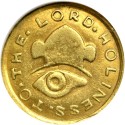
The Mormon Gold Coinage of Utah
“We are the Mormons…”
– A Study In Scarlet (STUD)

Editor’s Note: Since the second part of A Study in Scarlet is set in Utah and deals heavily with the Mormons, we thought it would be interesting to have a discussion about the Mormon Coinage. Donald H. Kagin, Ph.D, kindly gave us permission to reprint the chapter on Mormon Gold from his book, Private Gold Coins and Pattern of the United States. Thanks Don!
THE DERIVATIVE CALIFORNIA GOLD MINTS OF UTAH
The torrent of California gold dust swiftly spilled over into the adjacent territory of Utah, where it occasioned many of the same problems it had created in California proper. And like the Californians, the people of the territory were quick to understand the importance of keeping this gold for themselves through the creation of local mints.
UTAH AND THE MORMONS’ COINAGE
Ironically, the first enterprise to produce private gold coins from California gold dust was not located in that area at all, but in the territory of Deseret (later to be known as Utah). Not only were the first western private gold coins issued by the Deseret Assay office under the auspices of the Mormon Church, but they preceded the private coinage in California by over five months. In addition, unlike the other private coining operations, the coins of the Deseret Assay Office were conceived, executed, and distributed by a religious community from dust deposited as part of their church’s tithes.
Of all the fascinating tales of pioneer numismatic history, few can compare with the Mormons and the development of their coinage. Under the guidance of one of the major leaders in American history, Brigham Young, the Mormons significantly influence the entire history of the West. Among their numismatically related accomplishments was the discovery of gold at Sutter’s Mill, the public announcement of that discovery and the subsequent promotion of the gold mining industry in California, the issuance of the first American $20 gold piece, and, finally, the introduction of an entirely new alphabet and its use on a coin.
The events leading to the issuance of the Mormon coinage are so intertwined with the economic development of the Church of Jesus Christ of Latter-day Saints that it would be wise to revert back to 1830, when a young New Yorker (a native of Vermont), Joseph Smith, had a vision which led him to record what became known as The Book of Mormon – the foundation of a “restored” branch of Christianity. Attempting to find an appropriate area to establish his church, Smith moved west with a cadre of converts to his new faith, and established himself and his followers at Kirtland, Ohio, in 1836. You can find out more information about Joseph Smith first vision by researching further online, as this is a very integral part of the Mormon Faith.
Simultaneously, considerable number of private and incorporated state things were chartered or set up to participate in the tidal wave of speculation than pervading the nation and already at its peak. In November 1836, the Mormons formed the Kirtland Safety Society Bank with Joseph Smith as president. Confident that the Ohio State Legislature would approve their application for a charter, Agent Oliver Cowdery had printing plates for currency engraved by Underwood, Bald, Spencer, and Hufty in Philadelphia.
On January 1, 1837, Cowdery returned with $200,000 in beautifully engraved banknotes, but because the bank had no specie or hard money to back its notes, its charter was denied. Undaunted, the “Saints” then organize a “Stock Industrial Company” called the ”Kirtland Safety Society Anti-Banking Company,” and to avoid the expense of engraving new plates, the only attempt to change the appearance of the notes was use of a rubber stamp change the title to “Anti-Banking Company” instead of “Bank.” Notes of both kinds, mostly the latter, were put into circulation without too much difficulty.
The absence of a charter, the dubious legality of the operation and, more importantly, the May 1837 panic and specie suspension, cast a shadow over the bills and large quantities were returned for redemption from New York, Cleveland, and Pittsburgh. The refusal to redeem their notes on the ground that they were being circulated to provide a currency, and that redemption would prevent them from serving that purpose (there was no specie to redeem them anyway), did not endear the Mormons either to the bankers or their Ohio neighbors. Moreover, because of the rise of real estate prices over 40 percent from the year before, the Mormons who had borrowed on the notes were unable to repay their loans. As a result, church members were ruined financially. It was during this financial crisis of the closing of the bank in November 1837 that Joseph Smith prophesied that one day notes with “as good as gold.” His words, though derided at the time by the Gentiles, were never forgotten by his followers whose faith was to be well rewarded later.
In the meantime, Smith’s immediate problems grew rapidly. In March 1837 “the Prophet,” as treasurer, and Sidney Rigdon, as secretary of the Society, were arrested for violating the state banking laws. They were found guilty, but while an appellate court was deciding whether the Kirtland Safety Society was a bank or not, Smith and Rigdon “left town on fast horses to escape mob violence.”
The Mormons swiftly followed suit, moving first to Missouri, where they were driven out by the governor’s militia; thence in 1839 to Quincy, Illinois; and finally to Commerce, Illinois, which they renamed Nauvoo, meaning “beautiful” in Hebrew. Church records reveal that city scrip was issued while Joseph Smith was mayor of Nauvoo, but few, if any, of the notes are known today. Records indicate that as of March 4, 1843, the scrip was called in and burned, and warrants in two series, one typeset, the other engraved in $50 and $100 denominations, were also prepared and perhaps Issued, of which only a few samples survive today.
Acting on another vision, Smith declared to a few associates in 1843 that plural marriages would be sanctioned by the Church. The resulting furor culminated in Illinois Governor Ford ordering Smith to appear in Carthage. It was there that the prophet and his brother, Hyrum, were arrested, imprisoned, and finally murdered by an angry mob.
Early in 1846, the new Mormon leader, Brigham Young, led his threatened people out of Nauvoo through Iowa and Nebraska, and on July 24, 1847, entered the Valley of the Great Salt Lake. Here Young, sick with mountain fever, rose up on one elbow and proclaim to his pioneer brigade of 146 men, three women and two children that, “This is the place.”
BEGINNINGS OF COMMERCE IN DESERET
Young was an incredible individual: a city planner, engineer, religious leader, politician, and one of the most brilliantly resourceful executives in history. Because of his extraordinary abilities, the new community of Deseret grew and flourished, attracting hundreds of new converts. By the end of October 1848, some 2,000 people living in the Valley; and by 1850 the number add swelled to 12,000 with 16,000 acres of land under cultivation. Much of this growth can be attributed to the establishment of Salt Lake City as a major stop on the California Trail. A contemporary account of Young and the community written in July 1849 states:
While in the city, I had the pleasure of an introduction to Brigham Young – a man of medium height, thickset, with a short neck, his face full and round. He wore a dark suit of homespun goods, and was a man of fine appearance. Every word that fell from his lips was small and gospel to his followers. He ruled with an iron hand, and there was perfect law and order in his domain. Our stay in the city was a pleasant and delightful one, and, had it not been for the gold fields in California, many young men with have remained there….
Salt Lake Valley is one of the garden spots of the earth. All kinds of produce were cheap, contrary to what we had heard. The Mormons did not care for our money, as pumpkins were legal tender. Spices of all kinds were high. Cinnamon, cloves, ginger… coffee, and rice were five dollars per pound, while we could buy a freshmade cheese as large as a small washtub for one dollar. As a class, the Mormons were sober, clean, and industrious, also, ignorant and happy. He had no communication with the outside world… (Journal History of the Church of Jesus Christ of Latter Day Saints)
The reference to the use of “pumpkins” as barter is an allusion to one of the most persistent problems of the Mormons – there almost total lack of circulating medium other than a few discredited Kirtland and Nauvoo notes. The Mormon party that left Nauvoo for the Salt Lake City Valley behind their homes, property, and much of their worldly goods. Most of the ready cash have been used to purchase wagons, livestock, food and equipment preparatory to cross in the Great Plains. The long and arduous migration had almost exhausted what remaining coins they had brought with them, there being less than a dollar per person, or less than $200, when they reached Utah. Young alone had brought coins – $50 on his first trip in 1847, and $84 on a return to the Valley in 1848.
Little additional hard currency was forthcoming. One source of specie was the Mormon Battalion, a party of approximately 500 volunteers who fought in the war with Mexico. The conquest of California began in 1846, and the Mormon Battalion traveled into central California via the Santa Fe and Spanish Trails. Following the end of the war in July 1848, the Battalion began to make its way back to the Salt Lake Valley. Although there are no records, most historians assume that they brought some coins back to the settlement, but it must not have amount to much since, in August, Captain James Brown returned to California to collect his men’s back pay.
He returned to the Salt Lake Valley on November 20 with approximately $5,000 in debased Latin American doubloons. $3,200 of the money was used to buy cows in California and another $1,950 went to purchase what later became the city of Ogden. There were a number of heavy expenditures so that the money was soon spent.
Meanwhile, another Mormon party had arrived in San Francisco. On July 31, 1846, Sam Brannan, previously excommunicated but more recently reinstated by Brigham Young, arrived in Yerba Buena (later to be known as San Francisco” on the ship Brooklyn from New York with 230 Latter Day Saints. Their purpose to meet Brigham Young and his party traveling west, presumably California. Prior to the Saints immigration, the population of the community of Europe when I was 200. This new party 230 Mormons made the city, as a story and bankrupt observed, “largely a Mormon town.”
Party immediately set to work preparing for young as people by building a community called nouveau on the Stanislaus River. On August 25, Capt. Brown arrived in California to pick up the monies due his men there informed Brandon’s outfit and members of the Mormon Battalion who chosen to remain in California that young one of them to remain there that when an earnest much monistic so before traveling to Desiree.
Consequently, many of the men, including an engineer by the name of James Wilson Marshall, contracted with John Sutter to build the latter sawmill for his fourth situated 50 miles of the American River. It was the same James Marshall, a Mormon, who, as noted earlier, discovered gold there on January 24, 1840. It was another Mormon, sambar nine, who publicizes event.

THE FIRST USE OF GOLD DUST IN DESERET
There is an account of the Mormons at Sutter’s Mill, as contained in the diary of Robert Pixton:
We all went to work at the same place for Captain Sutter, we took the work of cutting a mill race. This was in September….Sometime in the winter, two of the brethren who were working for Mr. Sutter in the mountains found gold in a tail race they were making. Mr. Sutter let me see the first gold they found before sending it to San Francisco to get it tested. In May, 1848, some of the brethren and myself made a trip in the mountains to try and find a road over (instead of going down the Truckee River as we had to cross it about 20 times) but when we got in the mountains we found so much snow we had to return, and on our way back I stopped at what we call Mormon Island where there were some of the brethren at work getting gold….I stayed here for a short time and got some gold.
On September 28, 1848, some of the members of the Mormon Battalion returned to Salt Lake Valley with a little gold. The display of the metal excited the Saints, but Young, fearing a mass emigration from the Valley, forbade the Saints to mine gold. By November, however, streams of Mormon miners returning from California began trickling into the Valley and generating more excitement. On 13th of November 1848 fifteen Battalion men arrived from California. During the month several small companies arrived. Some of them brought considerable amounts of gold dust with them. Many of the Saints ignored Young’s admonitions and left join Brannan in the gold fields. Those who remained listened to their leader’s latest prophetic words: “Stay here. Raise wheat and potatoes and the gold will come to you faster than you can dig it out of the sand and gravel. Raise wheat and potatoes.”
Evidently Young had shrewdly calculated the high cost of provisions in California and the willingness of migrants thither to pay virtually any price for food. Thus Priddy Meek’s remarks about what was to be gained from the settlers and fortune seekers traveling through Salt Lake Valley:
I picked up a considerable amount of money besides other articles they would let me have for almost no price as they could not take them away and had to pack the balance. And in all this opportunity to cheat and defraud them poor strangers in a strange land I kept a clear conscience and had their well wishes when the left… Now the valley was full of everything that was needed by the poor Saints…
As in California, the gold dust brought by the returnees was at first traded for goods. Larger transactions were valued by weight, and small amounts by the pinch. Difficulties in handling and wastage in weighing, particularly when small values were being traded, compelled the Church to set up an office were Dr. Willard Richards, a trusted member of the Church First Presidency, “weighed the gold dust brought from California by the Battalion boys and others, into small packages Donovan paper, each package representing from one dollar up to 20, which passed current for money.”
FIRST ATTEMPTS AT MORMON COINAGE
Much of this dust was paid into tithes, or as donations towards the Perpetual Immigration Fund. As soon as the Church began receiving the dust, Young decide to coin the metal into coin– ingot of uniform weight and fineness. Indeed, on November 15, 1848, two days after fifteen Battalion men arrived from California, Young wrote:
I have received fr. The hand of Isaac Brown, a letter containing a schedule of your Property and understanding That you have a desire to dispose of your establishment, cattle, stock, etc., now in the Bear Valley. I sent herewith Mr. Lewis Robinson, a friend of mine, who is fully authorized to treat w/you and make suitable arrangements for Pay, Transfer Property, etc., and whatever arrangements you can make in regard to the Pay, you may consider me responsible for the amount. The coined money, I have not now on hand, but we are preparing to put the gold dust without any alloy, which if you dispose to take, you can have out the value, but if you should choose the American Coined money, we can probably get it by the time you want it. If not, it will probably save me some little trouble.
This is the first recorded mention of the idea of coined money in Utah. It is evident that Young recognized the particular advantages of coining in trading with non-Mormon settlers.
Four days later, on 19th of November, preparations were made to strike coins from the gold dust brought from California. Meanwhile the brethren deposited into the Church treasury various unrecorded amounts of gold dust.
On the 25th, at a historic meeting, Young, John Mobourn Kay, a blacksmith, and John Taylor devised an inscription for their gold currency: “On one side is the phrase “HOLINESS TO THE LORD’ encircling the emblem of priesthood – a three–point Phrygian crown over the all-seeing eye of Jehovah; on the reverse encircling clasped hands, the emblem of friendship, should occur the words, ‘PURE GOLD’ and the denomination of the coin.”
Kay set to work forging the dies, having learned the trade of pattern-making and moulding in iron and brass in his uncle’s foundry in Bury, Lancashire, England. Steel for the dies was furnished by Joseph L. Heywood, and they were engraved by Robert L. Campbell. Alfred B. Lampson forged some of the tools, and Martin H. Peck the drop hammer. It seems that historian Bancroft was correct in saying that the dies and “everything connected with the coining were made in Salt Lake City.”
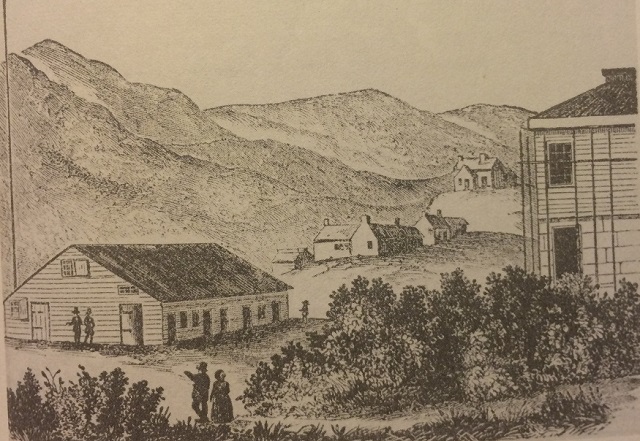
Public announcement was made the preparations were underway to coin gold dust, and the first recorded deposits were turned in and weighed on December 10, 1848. The first depositor was William T. Follett, a Battalion member who turned in 14 ½ ounces of gold dust and was credited with $232 at a rate of $16 an ounce, which was standard price for California gold at that time.
After some time and difficulty, preparations for the pointing of gold were finally completed, and Kay began to melt the dust and roll it into sheets. A punching press was then used to punch up the gold discs, while a coining press was used to stamp the designs on the planchets. Young actively supervised the mint operations while Thomas Bullock served as mint director and William Clayton as accountant. Dr. Richards weighed the dust while John Kay stamped the coins.

On December 12, 1848, John Kay minted the first twenty-five $10 Mormon gold coins. The first twenty were paid out to Brigham Young, and Kay received the remaining five. For some unknown reason, both paid a premium of 50¢, or $10.50 per point. Kay originally kept his coins, but Young kept only two, paying out thirteen the first day and five more on the fifteenth to depositors of gold dust. The first recipient of Young’s coins was William T. Follett who received five of the $10 pieces, for total credit of $52.50.
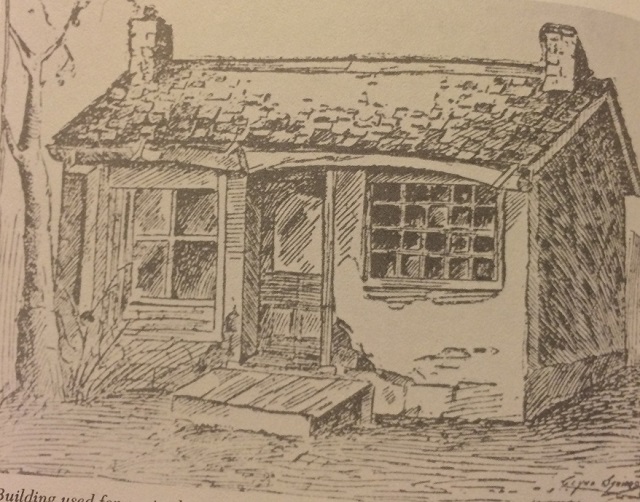
On the 19th, twenty-one additional coins were minted, all of which went to Young at their par value of $10. This time, the President kept six and paid out fifteen, also at par. The major recipients of the $10 pieces, besides Young and Kay, were Follett with five, Asahel A. Sathrop, four, and Shadrack Holdaway, four. In all, forty-six $10 pieces, dubbed “Valley Coin” were struck. It is probably true, as John Kay’s daughter recalled in 1911, that “the early coins were of pure gold dust were made merely for local convenience to save weighing the gold dust.”
Within four months, close to $8,000 in gold dust and a little coin were turned into the depository Young had set up for this purpose. The journal entries indicate that fifty-five Battalion men deposited 77 percent of the total, and 135 other Saints contributed the remainder.
Two very perplexing contemporary accounts exist concerning the description of these first Mormon pieces. The first is from the diary of Hosea Stout dated Wednesday, December 13, 1840:
At home and at the office where I first saw her new gold coin which is perfectly plain only has the price 10 dollars 50 cents on it.
Since Kay minted the coins on the twelth, the entry date corresponds, and the original price of $10.50 is indeed the price for which the first coins originally sold, but the known coins are stamped with a value of $10, not $10.50. Why does Stout say they are “perfectly plain” when all known $10 Mormon gold pieces have elaborate designs on both sides? Was he comparing the elaborate federal issues to the relatively plainer Mormons coins?
The second account by Ben Carpenter in a July 17, 1849, seems even more erroneous:
Mormons say they have plenty of gold near them, have established a Mint of their own. I have seen the coin, Vignette, on one side a mountain and an eye, on the other a Sea Gull. They say the Lord sent millions of Sea Gulls last year to destroy the crickets. Before they came, the valley was filled with them.
Perhaps the mountain Carpenter mentions was a mistaken Phrygian crown, and the seagull, clasped hands. It is unfortunate that no other contemporary accounts exist describing these first coins, because existing Mormon $10 gold pieces do not compare with either of these observations.
Sometime between December 19 and 22, the crucibles essential in melting gold were broken, for on the 22nd, when “many Brethren met in office to exchange Gold Dust,” there were no coins to give out. Since the coining could not be continued, the punching press was dismantled and used for cutting nails by removing the large screw and attaching a lever to the frame – thus improvising shears.
USE OF MORMON CURRENCY
Meanwhile, immediate steps had to be taken to provide a temporary circulating medium until new crucibles could be obtained. On December 27, Bullock sent out four notices, “calling the brethren together to regulate the currency.” At a meeting held at 12:00 P.M. the following day in the Temple Block Bowery, Young “offered the gold dust back to the people, but [they] did not want. I [Young] then told them we would issue paper till the gold could be coined. The municipal council agreed to have such a currency and pointed myself and Heber C. Kimball and Bishop Newell K. Whitney to issue it.” No more notes were to be issued than the amount of gold dust deposited.
Bullock attained the necessary paper, and Young gave instructions as to the size of the notes, number, and denominations. Since there was no printing press in the valley at the time, it was necessary to write or handprint the bills with pen and ink on plain white paper two inches wide and four inches long. The next day Bullock cut out the paper and made the $5 bills while Robert L. Campbell, a clerk in the office of the president of the Church, made $1 bills. Young signed about $100 worth that day. The following day, the thirtieth, Bullock wrote out $3 bills and, along with Heber C. Kimball, signed them. Newell K. Whitney and John Taylor, along with the clerks, joined Young, Kimball, and Bullock in making and signing about $1,000 more the next. During the new year, Bullock stamped new notes and first ones ($1 denominations) were issued to the gold depositors.

The new “banknotes” appeared to be accepted among the people. The new emergency issues were backed by the gold. A total of 830 notes of the nominations of $.50, one dollar, three dollars, and five dollars were issued and dated January 20, 1849. They were embossed with the seal of the 12 apostles and bore the signatures of Brigham Young, Heber C. Kimball, Newell K. Whitney, and Thomas Bullock, clerk.
Evidently these notes were not enough to satisfy the current needs, and the Mormons issued an additional 735 notes of the same denominations but dated January 5. The next day a resolution was passed by the council that “Kirtland bank bills be put into circulation for the accommodation of the people,” thus fulfilling the prophecy of Joseph Smith that the Kirtland notes would one day be as good as gold.
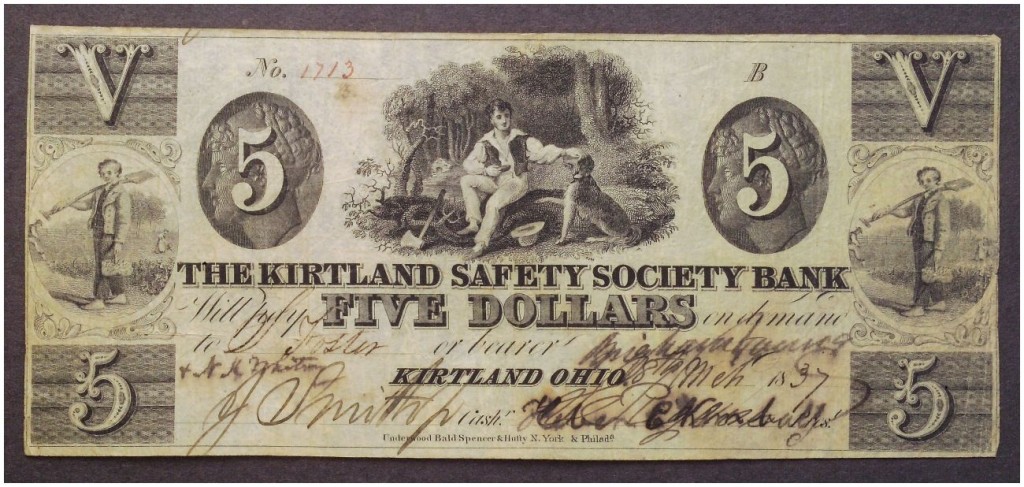
A total of 256 of the Kirtland notes were reissued and countersigned in $1, $2, $3, $5 and $10 denominations. These notes all contain additional signatures, usually of Whitney, Young, or Kimball. Each bore a handwritten B inscribed by Bullock and all bear the embossed seal of the Twelve Apostles.
These expedient notes serve their immediate demands until Truman O. Angell, the Church Architect, could build a printing press and cast type in order to print new notes on January 22. Since the resolution providing for the issuance of these hand press bills was passed on the twentieth, the notes were dated accordingly. Angell, assisted by Brigham Young as typesetter, printed 3,329 notes in denominations of 50¢, $1, $2 and $3. The printing of these notes, which were issued as late as the end of July, represented the first printing in the intermountain West.
When the Church mint again was ready for coinage in September 1849, Young called in all the currency and much was burned. Only a small number survive today. No new notes were issued by the Church until the Mormon or Utah War of 1857 – 1858, during which the Church association emitted approximately $100,000 in notes.
FURTHER ATTEMPTS AT MORMON COINAGE
In April, 1849, additional gold was brought to the Valley by the Battalion members and deposited at the Mormon bank. Brigham Young wrote to Orson Hyde, Church agent in Iowa, ordering some acids and one dozen of the “best crucibles for melting the most precious coins.” These items did not arrive until sometime in September. Meanwhile, on April 23, John Kay took impressions of four sets of dies.
Coining resumed on September 12, 1849, which would probably explain the fact that the last payment in Mormon currency was made on September 29. The new Deseret Mint was set up in the home of Dr. William Sharp, a dentist. Sharp’s house was an adobe building containing six rooms and located on the north side of South Temple Street, which later became the “Bikuben” Printing Office and was eventually torn down in 1900. The garage of the Hotel Utah now stands in its place.
Church Historian Orson F. Whitney published an account of the workings of the second minting, written by J. M. Barlow of Salt Lake City:
The first dies, consisting of a $2.50, and $5 and a $20 piece, were made by John Kay and an old blacksmith, but were very crude. At the request of Governor Young, I had made in my office by Dougal Brown, a set of dies for $5 pieces, and for a number of years (until Governor Cumming ordered its discontinuance and parentheses I refine the goal and coined it into money. If I do say so myself, it was as perfect a piece of money as ever came from any mint.
Evidently the $5 dies made by Barlow were those dated 1860. The omission of new $10 dies may mean Kay used the old dies from 1848.
The new issues retain the same clasped hands and all-seeing eye symbols as those designed in 1848. The words “Pure Gold” represented by the initials “P.G.,” and the letters “G. S. L. C.” were added for “Great Salt Lake City.” “DO.” was substituted for DOLLARS on the smaller $2½ pieces. Since no $10 pieces are known with this new design, this might confirm that the older dies were retained rather the new ones made.
Writing in 1911, one of Kay’s daughters remembered how she and her sisters “would amuse themselves evenings, building little log cabins” out of the gold bars her father brought home for safekeeping. By the end of October, 1850, enough gold had been minted to be thought quite plentiful. Professor Arrington estimated that a total of $70,000 of these coins were issued. An accounting of the denominations relative production volume is given in the Salt Lake Tribune of July 17, 1898:
At first the $2½ pieces were most plentiful and popular. Then a large number of $5 coins were made, and these, with the first name, constituted the bulk of immense work. Not many $10 pieces were minted, and the $20 coins were still fewer.
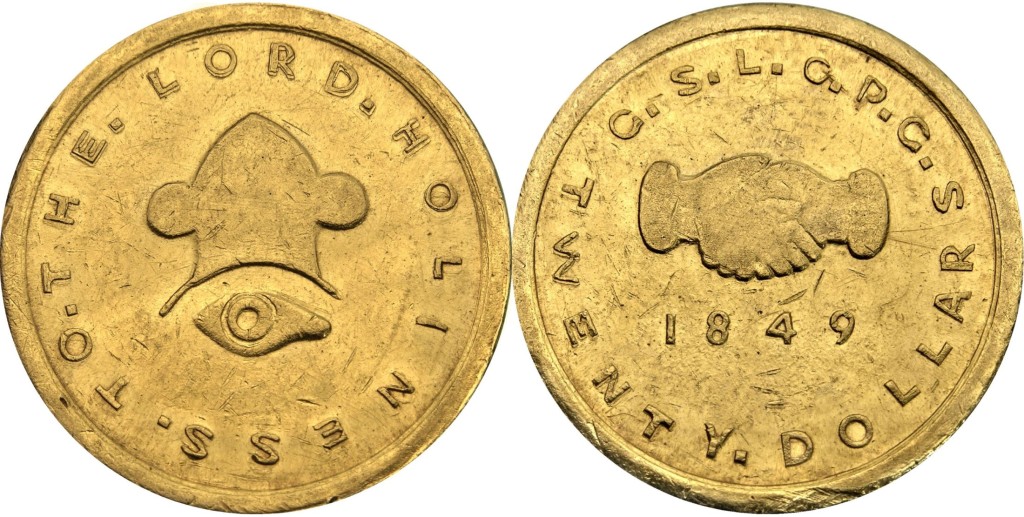
These $20 pieces have the distinction of being the first $20 gold pieces struck in the United States – preceding the regular United States $20 gold piece by six months (September, 1849 – March, 1850).
These first few coins were of natural alloyed gold and were easily abraded. In the middle of November, therefore, $600 worth of silver was purchased for hardening the coins. This may account for the weight variance in the same design coin or for the slightly heavier 1850 $5 issues.
Although the Mormon coins were intended for local transactions only, and therefore taken apart by the Salt Lake City merchants, many of them were used to purchase goods from outsiders. As early as May 1850, Mormon coins appeared as far east as St. Louis, Missouri. By the end of the year the coinage began to appear in most sections of the country, especially at major port cities.
In January, 1850, the assayer of the New Orleans Mint, William P. Hort, received a specimen of the $20 gold piece. To his dismay, he discovered that the coin was not only of improper purity, being .892 fine versus .900 fine for United States coinage, but it was also underweight by some 85 grains or approximately 20 percent. The Philadelphia Evening Bulletin reported similar findings the same month, and warned readers to be on the lookout for such coins. The best records of the debased nature of the Mormon coins were released by Jacob R. Eckfeldt and William E. Dubois in their important work, New Varieties of Gold and Silver Coins, published in 1850:
THE MORMON COINS have just been received, through a gentleman who came overland from Great Salt Lake in eighty-one days. They consist of 20, 10, 5, and 2½ dollar pieces. In fineness they are about .899 thous., with little variation; and they contain only the native silver alloy. The weights are more irregular, and the values very deficient. The 20-dollar piece weighs from 436 to 453 grains, value $16.90 to $17.53. The 10-dollar, 219 to 224 grains, $8.50 to $8.70. The 5-dollar about 111 grains, $4.30. The 2½ dollar, about 58 grains, $2.25.
A supplementary Eckfeldt and Dubois report placed the average fineness at 866 thousandths.
Throughout the next year, there were many newspaper accounts vilifying the Mormon coins and labeling them as “spurious,” “debased,” and “vile falsehoods.” When circulated, they usually were taken at a 10 to 25 percent discount. Only the Pacific Company, and perhaps Baldwin & Co., coins endeared a similarly contemptuous reputation.
Whether this fraud was intentional or not is not certain. In extenuation, one could show that the coins were made of unrefined California gold since parting acids were difficult to obtain and the minting equipment, having been made in Salt Lake City, may have been imprecise. And although some of the workers had pertinent skills, no one was an experienced assayer.
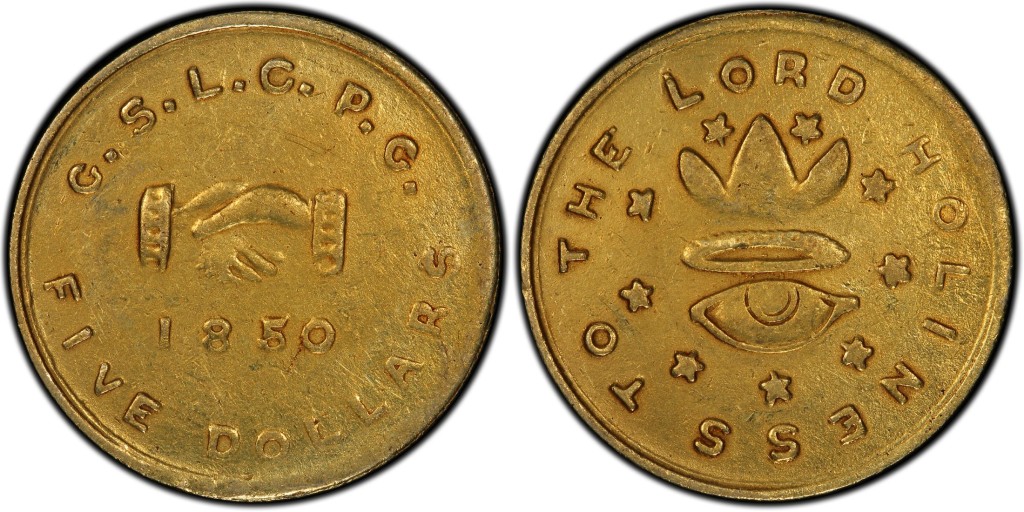
It is not certain when the new 1850 $5 gold pieces were struck, but in Thomas Bullock’s Journal entry dated March 15, 1850, the following is written: “B. Y. called in morning & gave orders about new dies.” It can probably be presumed that the new coins, varying somewhat in design, were issues soon after that entry.
Though the minting equipment was sold at auction on August 12, 1850, the press was “bid in,” and Kay continued to issue coins through the end of 1851, presumably regaining other necessary tools and equipment required for minting. There may have been other attempts to issue coins between 1851 and 1860, but we know of none; although there are still specimens of “Deseret Scrip” surviving which were issued between 1858 and 1860 by the Deseret Currency Association to keep trade alive.
FINAL ATTEMPT AT MORMON COINAGE
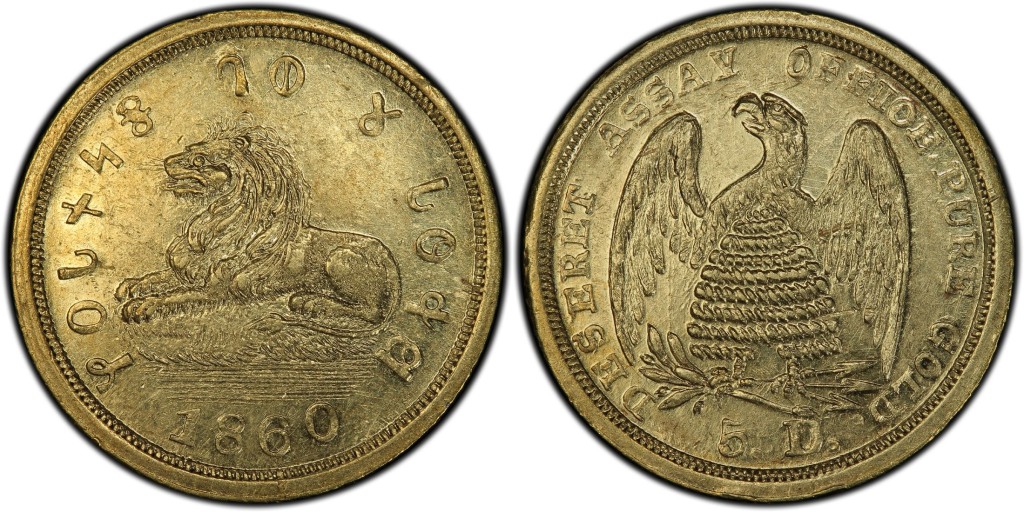
The last attempt at Mormon gold coinage was the striking of a $5 denomination dated 1860 and bearing on the obverse a lion and the newly invented Deseret alphabet, which was the basis of a proposed language peculiar to the Mormons. The reverse displayed an eagle and beehive under the words DESERET ASSAY OFFICE PURE GOLD. Besides being of a superior design, these new specimens were the first known use of the Deseret alphabet.
The occasion for the issuance of these pieces was the discovery of gold in Colorado in 1858. The gold dust used for the new coins was from the Colorado mines, purer than the California gold – .917 fine versus .890 fine.
A jeweler, J. M. Barlow, made the new dies at the request of Brigham Young. A mint was temporarily established in Barlow’s jewelry shop where he was assisted by Douglas Brown.
According to the notes of Mormon mining engineer and historian Colonel Joseph M. Locke: “From February 28, 1861, to March 9, 1861, Barlow coined from these dies 472 five-dollar pieces – $2,360 weighing 113 oz. 16 pen. 3 grs., or for each piece 4 pen. 19 43/59 grs.” Records indicate that they were of full weight and fineness. The coinage of these pieces continued until was prohibited in 1861 by Governor Alfred Cumming, Utah’s first non-Mormon chief executive. A pattern design was also struck in 1860, bearing, on the obverse, the design of a lion in front of mountains. A few of these pieces have survived in brass but no gold specimens are known.
For the Mormons the coins were a success. They serve greatly to increase trade in and around the Valley and enabled them to purchase goods in the states to the east, even though the coins were accepted only at a discount of 10 to 25 percent. The Mormon coins circulated at par among the Mormons themselves but were not so popular with the “Gentiles.” The following “General Order” was issued to United States soldiers in January 1860:
Hdqts., Camp Floyd, U.T. 10 Jan. 1860
Gen. Order No. 4, the Commanding Officer has been formed that there is a large amount of gold coins – several thousands of dollars, purported to be worth five dollars, commonly called “Mormon Coin,” about to be put in circulation in Fairfield. As this coin is understood to be worth only (about) 4½ dollars, the Commanding Officer recommended to the soldiers not to receive it for more than the sum, and better still, not to take it at all.
by the order of Brevt. Col. C. F. Smith
Clarence E. Bennett
2nd Lieut. and Adjutant 10th Infantry and Post Adjutant.
On February 26, 1862, Apostle Wilford Woodruff and Thomas Bullock delivered a box of gold dust, Kirtland Bank bills, and Deseret Mint coins to President Young. Most of these items evidently were spent, and according to the Deseret News of March 5, Mormon money ceased to be used on that day. Evidently, there finally was an adequate supply of United States coins to meet the needs of commerce. On that day, March 5, 1862, one of the most curious and romantic episodes in Western and Numismatic history closed.
![]()
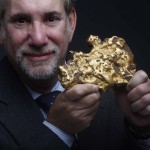 Donald H. Kagin, Ph.D. is President of Kagin’s and this country’s foremost expert on Pioneer and Territorial coinage of the United States. A former Governor of the American Numismatic Association, Kagin proposed and successfully engineered the passage of a Congressional bill allowing the minting of San Francisco Mint Commemorative gold and silver coins. Net proceeds exceeded $4.75 million, which are being used to renovate the historic Old San Francisco Mint.
Donald H. Kagin, Ph.D. is President of Kagin’s and this country’s foremost expert on Pioneer and Territorial coinage of the United States. A former Governor of the American Numismatic Association, Kagin proposed and successfully engineered the passage of a Congressional bill allowing the minting of San Francisco Mint Commemorative gold and silver coins. Net proceeds exceeded $4.75 million, which are being used to renovate the historic Old San Francisco Mint.

Sorry, comments are closed for this post.